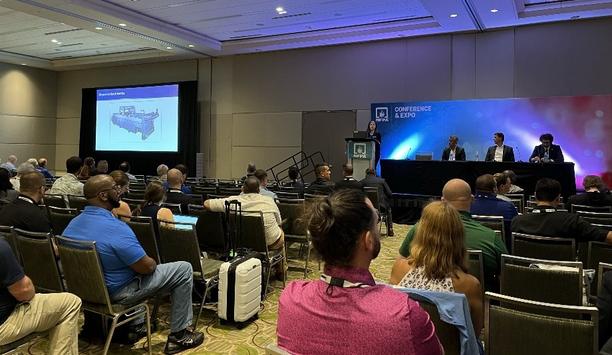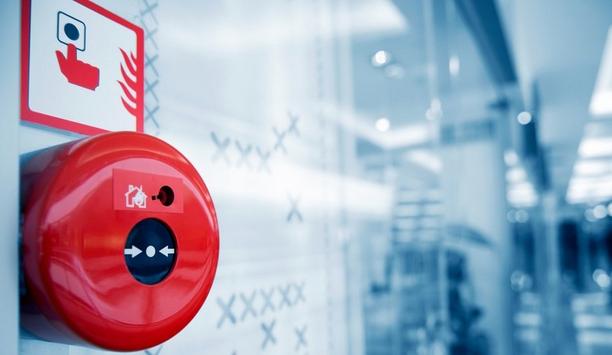Firefighters often use aqueous film forming foams (AFFF) to extinguish fires, especially fires that involve petroleum or other flammable liquids.
AFFFs that contain fluorinated surfactants have been shown to be the most effective agents to fight hydrocarbon-fuel fires in military, industrial and municipal settings. They have been used since the 1960s. However, the surfactants have been shown to be an environmental threat, contaminating ground water and creating hazards to human health.
What makes up the foams?
Although the materials have been manufactured for 50 years, it is only in the last couple of decades that the compounds have been linked to health problems.
Major components of the foams are per- and polyfluoroalkyl acid (PFAS) and perfluorooctanesulfonic acid (PFOS). Concerns about the materials surfaced as early as 1974. Both chemicals are persistent in the environment and in the human body – meaning they don’t break down and can accumulate over time. There is evidence that exposure to PFAS can lead to adverse human health effects.
Related health problems include kidney, testicular, bladder and prostate cancer
Related health problems include kidney, testicular, bladder and prostate cancer, as well as immune reproductive and hormonal dysfunction. Unacceptable levels of the chemicals have been detected in the drinking water on or near sites where AFFF is used, such as fire training areas, airports, refineries and chemical plants.
Newer foam formulations
Some newer foam formulations contain variations of similar compounds that are also problematic, specifically PFAS substances based on shorter carbon chains (C6). There are potentially hundreds of these “precursor” materials, and none are biodegradable. Some are proprietary and evade detection and regulation. Although not specifically regulated in many cases, the materials can still be problematic.
The Fire Fighting Foam Coalition (FFFC) is a non-profit trade association formed in 2001 to focus on issues related to the efficacy and environmental impact of firefighting foams. They publish “best practice” guidance on proper foam selection, containing and eliminating foam discharge, and disposal of foam and firewater.
The international counterpart is the FluoroCouncil, a global organization representing the world’s leading FluoroTechnology companies. Founded in 2011, membership includes companies that manufacture, formulate or process fluoropolymer products, fluorotelomer-based products, fluoro-surfactants, and fluoro-surface property modification agents.
Weighing up effectiveness vs environmental damage
There has been effort to develop foams that are free of fluorosurfactants
In the last decade or so, there has been effort to develop foams that are free of fluorosurfactants, although there is some disagreement about whether these foams are as effective. Some Fluorine-Free Firefighting (F3) foams have been shown to have comparable performance in some applications, and many airports around the world have embraced the F3 foams, including London Heathrow, Gatwick, Paris De Gaulle and Orly, Lisbon, Brussels, Stockholm, Sydney and Melbourne.
Airports have often reported success using the F3 foams, and U.S. airports will be required to use fluorine-free foams by 2021. However, some experts contend that fluorine-free foams are not as effective. The search continues for ever-more-effective fluorine-free foams.
One argument goes: If fluorine-free foams do not perform as well in a specific emergency, the threat to human life is more immediate than any threat posed by possible future environmental exposure to PFAS.
Using a fluorine-free foam simplifies cleanup after an incident, as the foam can be washed into runoff drains. There is no need to collect and dispose of the effluent to prevent release into the environment.
Specially designed training foams
There are also specially designed training foams that simulate AFFF during training but do not contain fluorosurfactants and are biodegradable.
The safety debate also extends to firefighters
The safety debate also extends to firefighters, some of whom claim illness from exposure to fluorosurfactants. There are multiple firefighting-foam-related lawsuits pending.
But does lack of fluorine equate to more “environmentally friendly?” One researcher contends that higher aquatic toxicity of non-fluorinated foams suggests otherwise, basing the conclusion on how many fish die when exposed to each type of material.
Fluorinated surfactants may have fallen into disfavor, but a worldwide ban is unlikely, given that China still produces large quantities of PFOA which is widely used to make firefighting foams in Asia.







































